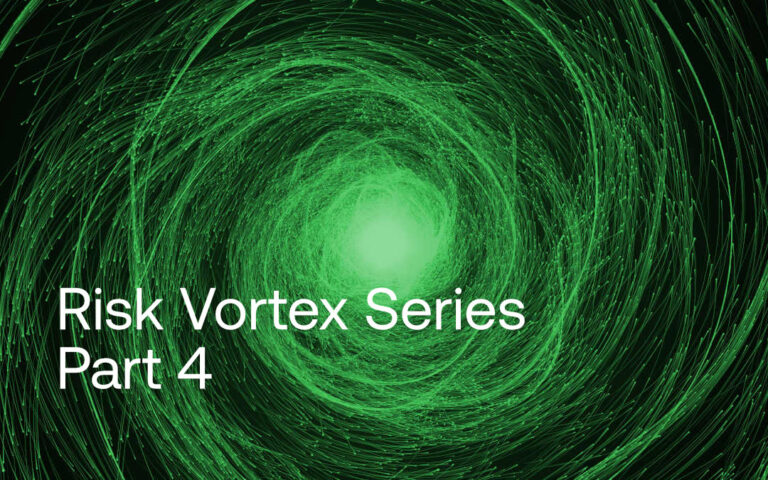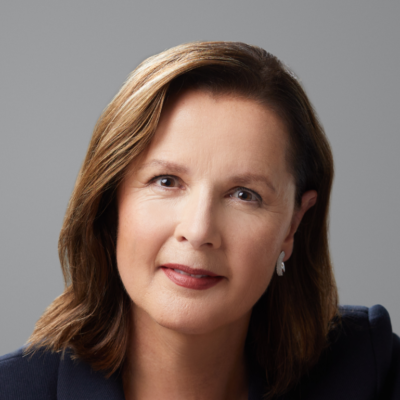Four Principles for Understanding a Person’s ‘Risk Cocktail’
I have touched on work environment several times in my recent blog posts. It is an interesting subject because environments play a great role in shaping us as people in every aspect of our lives. 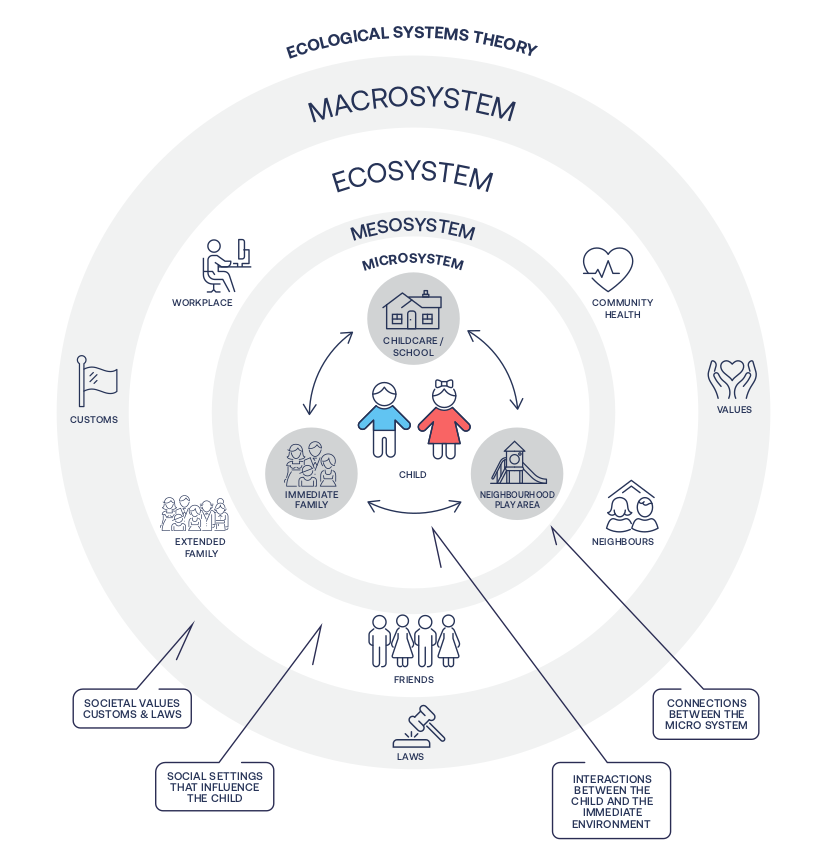
People are like sponges, absorbing all aspects of their environments and do so immediately upon entering the world. Though the absorption rate may vary at different stages, it continues on throughout our lives, influencing our ideas and everyday decisions.
Psychologist Urie Bronfenbrenner’s ecological systems theory explains how human development is influenced by environment. The theory identifies five environmental systems with which an individual interacts, beginning at the central layer and expanding outward from there.
Environments become more complicated as we age, as do relationships. However, the concept of human development within environments remains the same. These environments will shape the way that we interpret the world and how we react to everyday situations. We are constantly stepping into these external environments in our journey through life.
How Do Work Environments Influence Us?
People spend a majority of their time in some sort of work environment, so it is important to understand the influence it may have on them. Since all people interpret information differently based on prior life experiences – or predispositions, there are bound to be different outcomes. Given the same skill set, one person may thrive in a particular environment and another may languish. 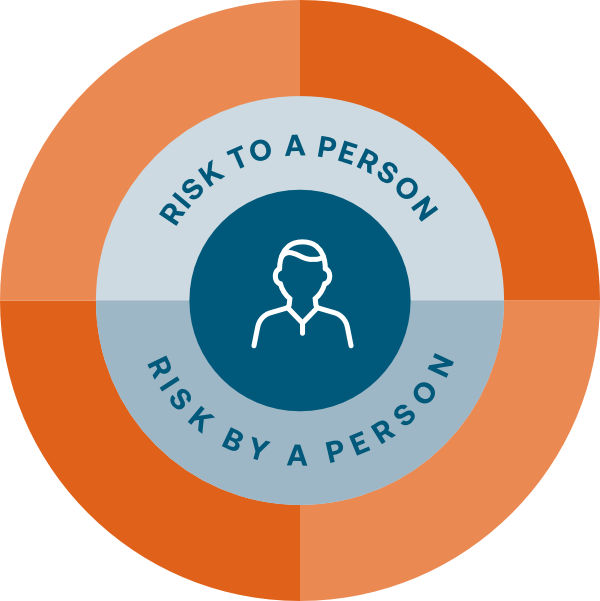
Nobody can know how another individual will react to any given situation just by looking at them. This presents a challenge in evaluating people and essentially figuring out “what makes a person tick?”
We must first break everything down into simple steps. This helps us look at people and risk clearly and is why I have emphasized that people sit at the centre of all risk. Looking at risk through the Unearth Risk Lens, we know that it falls into two categories:
- Risk to a person
- Risk by a person
How to Understand a Person’s Risk?
Every person will have a unique ability or lack of ability to navigate particular environments. It is important to understand what risks may come with these abilities, which is why Unearth developed their person-centred Risk Model containing four key principles.
Let’s take a quick look at the four principles.
- Predisposition – an holistic view of the person. It is a broad term that
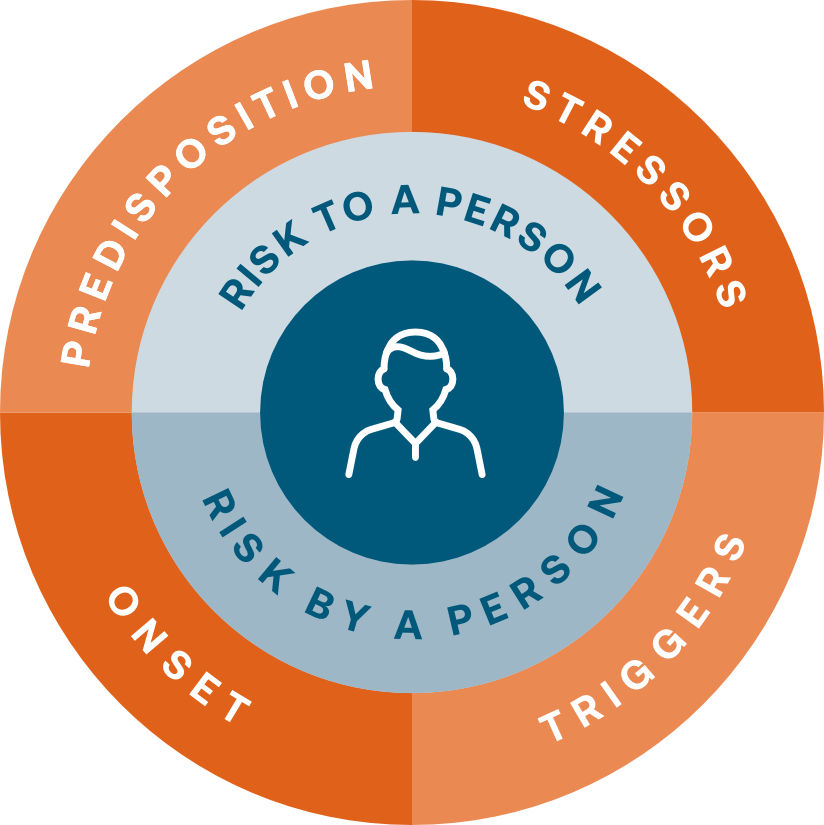
Unearth’s Risk System, named S4R
covers life experience, values, beliefs, personality, character, mindset, capacity for stress, and more. All of these things are influenced by a person’s past and present, making them unique individuals who are always changing. Other factors such as genetics, environment, and health can play a part in this as well. You can simplify this with the aforementioned question of “what makes a person tick?”
- Stressors – Stressors are internal and external environmental factors that create pressure, strain, or tension in a person’s life. Internal stressors can be related to physical or mental health, and external stressors come from the environment around us. These can include work, home life, family, or social obligations, not to mention financial woes, which are also external stressors.
- Triggers – Triggers are events that impact a person, in a direct or indirect way. They are more often associated with negative influence. There are human-made triggers, such as violence, traffic, arguments, and natural triggers such as disasters.
- Onset – Onset is a decision to act or react to any given situation. This can be conscious or unconscious and can lead to changes in behaviour and attitudes. These actions can be precursors to high risk activities, though they can also appear immediate in cases and at times with velocity. The expressions vary in severity but can include self-harm or harm towards another person, community, or organisation. In any case, Onset expression usually falls under two categories:
- Concealed – when you have not observed an external change in behaviour. This is essentially a hidden expression.
- Observable – when you can tangibly observe external changes in behaviour, such as lashing out or being disgruntled.
It can be difficult to even attempt to understand an individual’s predisposition, especially when trying to determine if an environment may cause harm. Every person has a different predisposition which draws from their life experiences, intrinsic values, and stress capacity. So, there is no universal approach to connecting and engaging with people on such a level.
Where to Go from Here?
This is indeed a complicated concept, and there is no simple answer. However, you might be interested in tools and assessments to help you better understand people. Tools can be very useful and you are sure to be utilising some already. Some common examples are personality assessments, a criminal history check, or a medical assessment – all of which provide valuable information. It makes sense to confirm the success rate of such tools and to be sure you are finding ways to improve.
When you see survey’s like Gallup which shows that 85% of employees are not engaged in the workplace, it is clear there is work that still needs to be done.
Summary
The “risk cocktail,” as we have called it, may sound dangerous, but it is important to not fear it. Instead, focus on taking a balanced, pragmatic approach to assessing risk.
Leveraging a person’s individual journey and experiences can be beneficial to an organisation, but you must be mindful of the work environment. Which is why clear and honest messaging to prospective and current employees is critical around work environment and culture. They need to be able to make a more informed decision to determine if they have necessary skills and predisposition to flourish in the organisation, or if it could ultimately do them harm.
We encourage you to strongly consider how your current work environment and culture is impacting your employees. When you’ve done this, ask yourself. “Is the organisation playing Russian Roulette with its people?”
Learn More with Unearth
If you find yourself more interested in building a “safe to succeed” work environment, you might find value in more in-depth pieces about Unearth’s Risk Model, which sits within Unearth’s Risk System, known as S4R. There are benefits in putting forth the right type of effort and improving your organisation’s risk profile.
If you’d like an analogy and example of using the Unearth’s Risk Model, read on to Part 5 of the Risk Vortex Series.
You may also be interested in the book ‘Risk Starts and Ends with People‘ being released mid-2021. Feel free to reach out to learn more about the book or share your thoughts on the blog or any information we have provided, we would welcome hearing from you through hello@unearth.com.au
SEE PART 3 OF THE RISK VORTEX BLOG SERIES
SEE PART 5 OF THE RISK VORTEX BLOG SERIES
